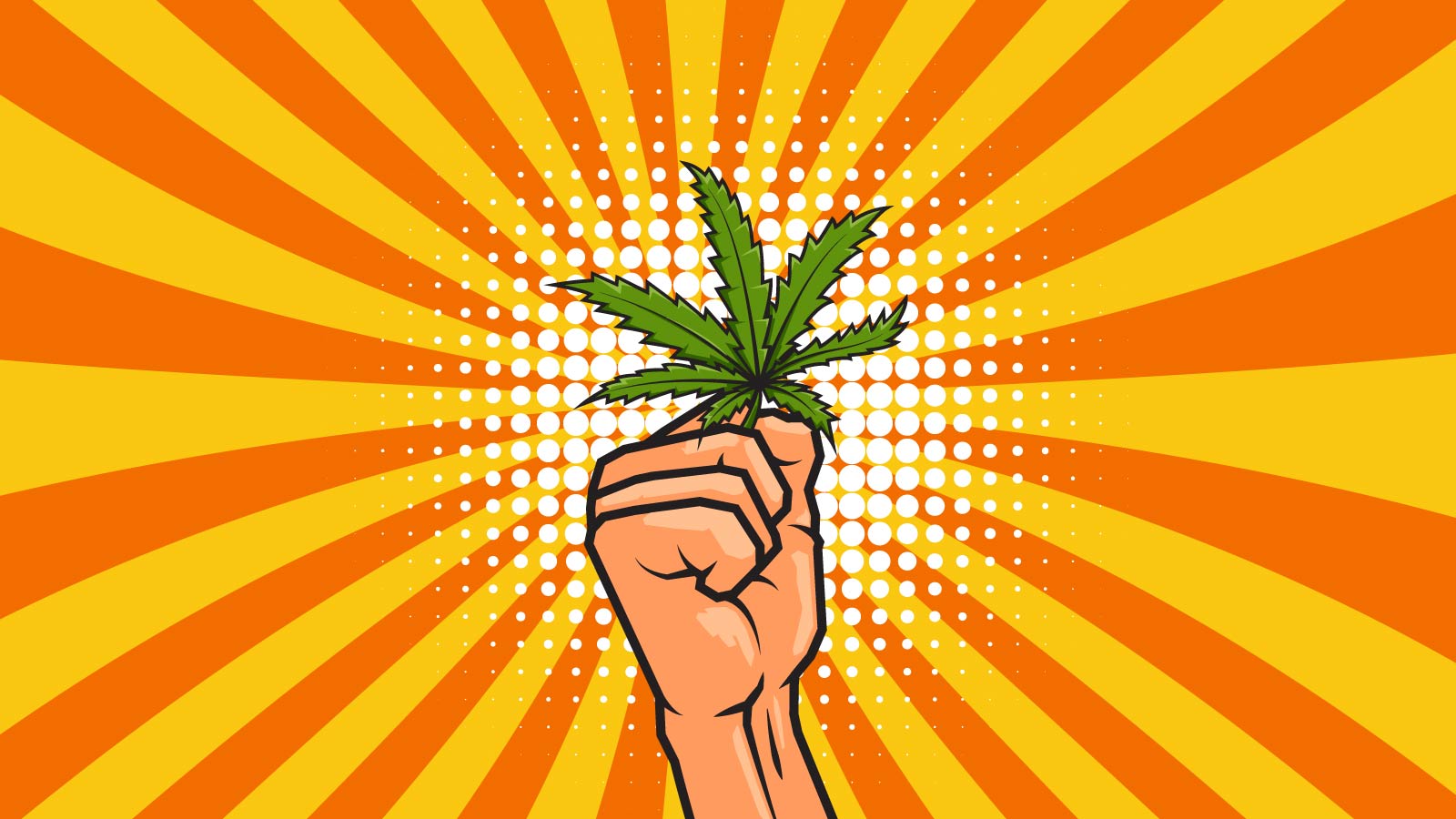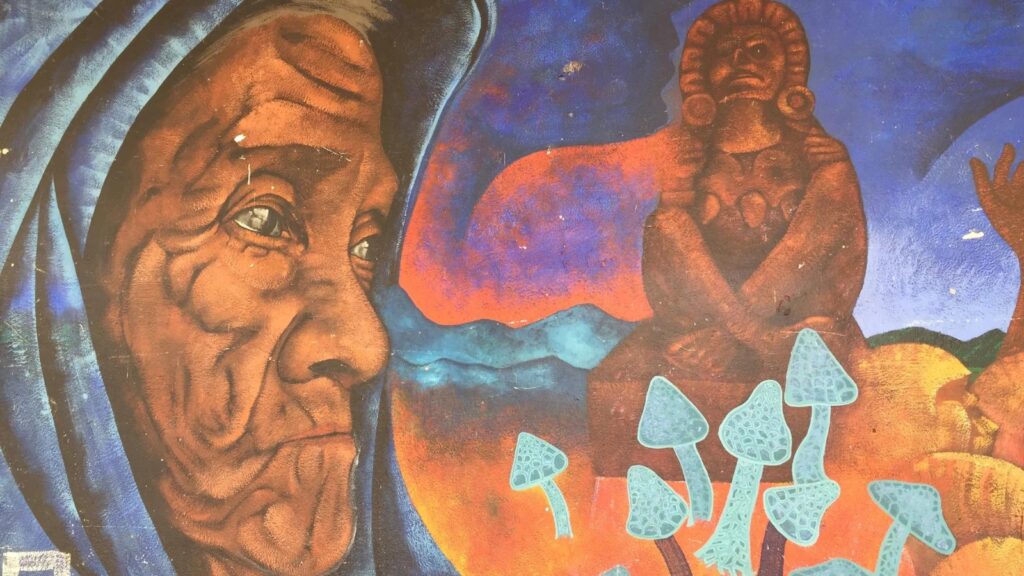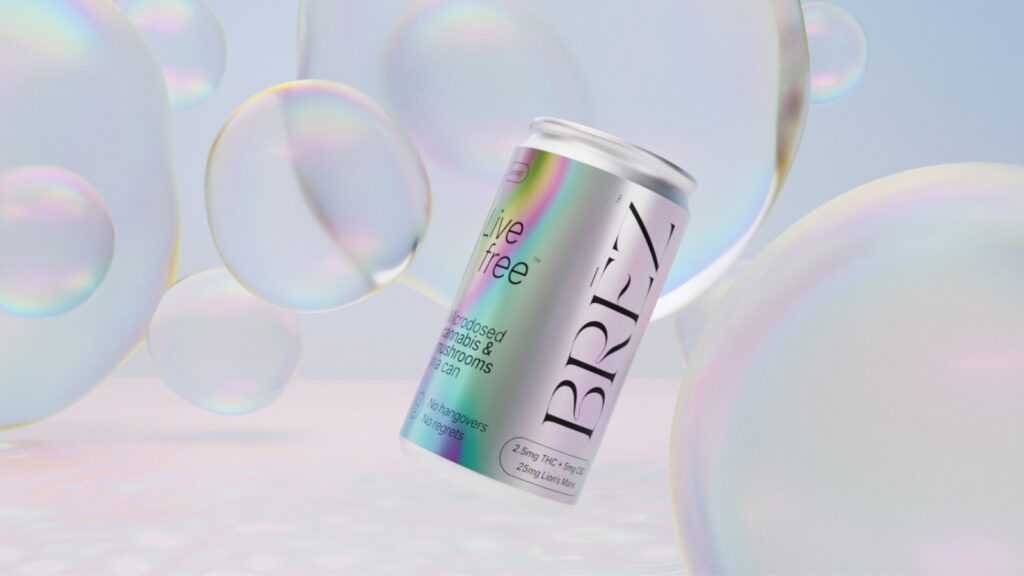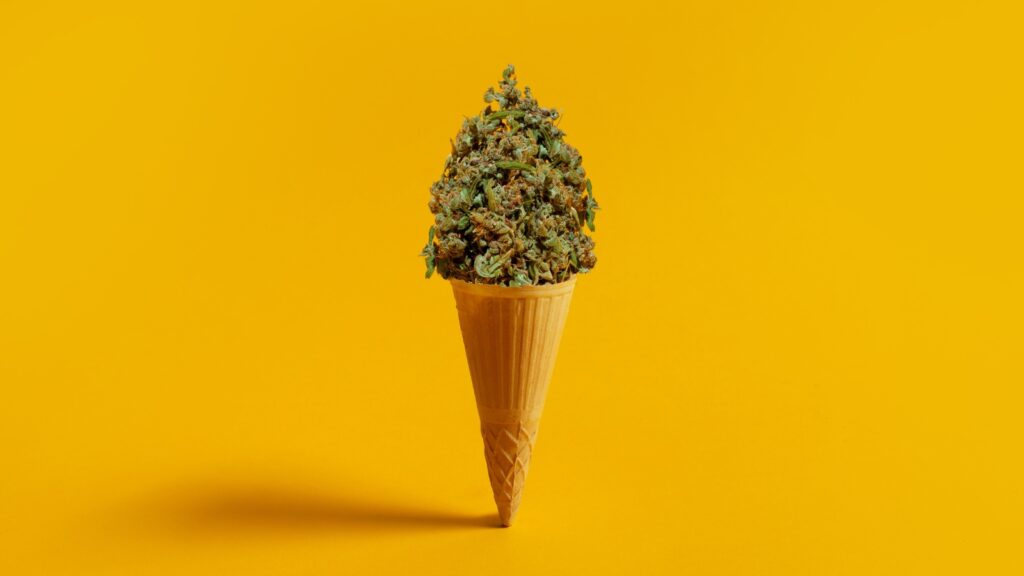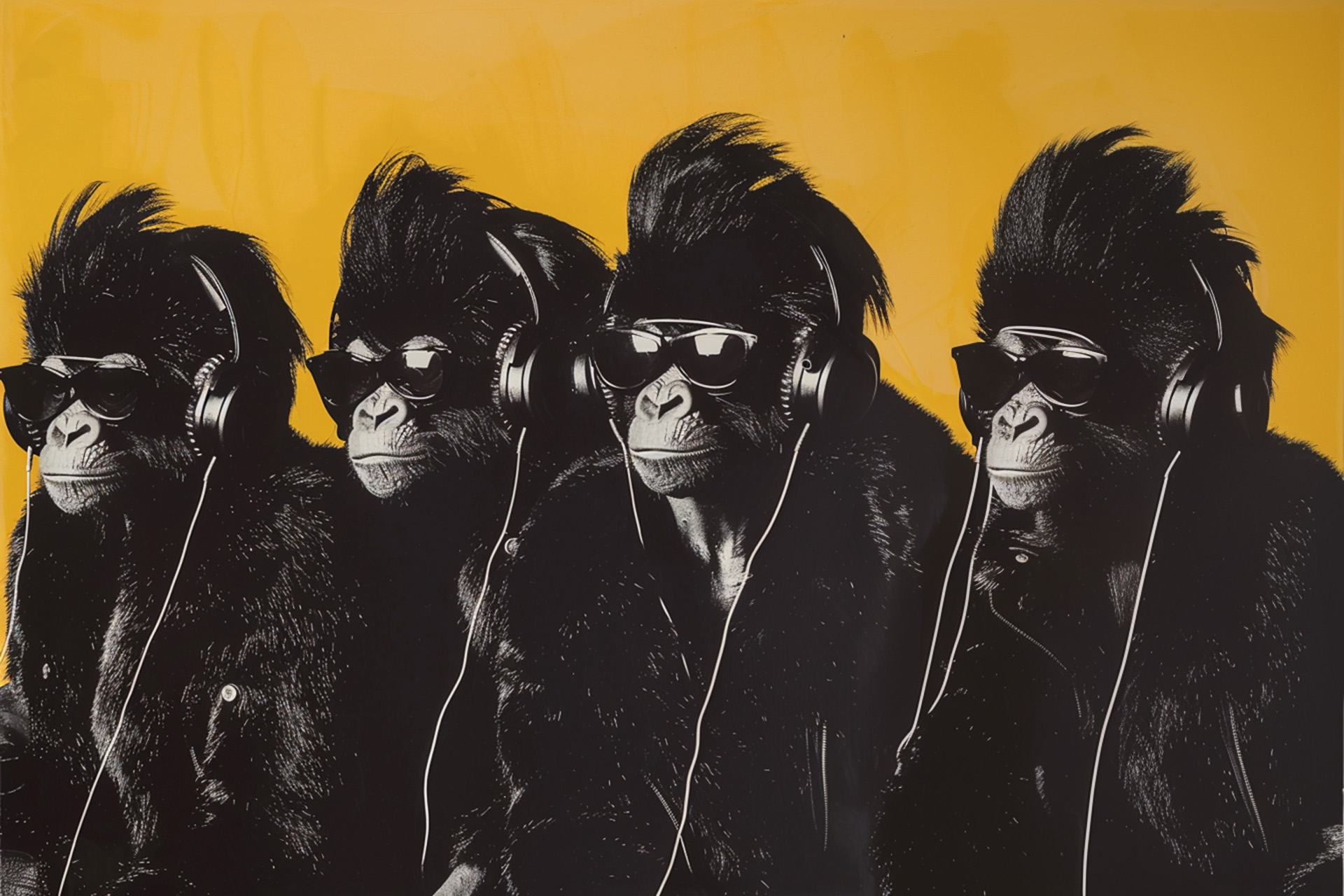Cannabis has emerged as a widely regarded substance and is gaining a lot of traction around the world with legislators.
According to a global survey of drug use from 2014, cannabis was the third most used drug throughout the world. In the United States, it was the second most used drug, with 69.9% usage of all survey respondents, making it more popular than tobacco. This large popularity of weed in the United States is in part from the legalization efforts prior to 2014.
Colorado and Washington made cannabis a recreationally legal substance in 2012, with many states having already legalized it for medical use. In 2016, BDS Analytics released a report that attempted to account for both legal and illegal cannabis sales in the United States. This report showed a total annual sales of $53.3 billion dollars. To put this in context, wine sales in 2016 accounted for $38 billion. This goes to show how large the cannabis industry currently is and could become with further legalization.
Overview
Despite cannabis being a hugely popular substance in the United States and throughout the world, we still have much to learn about it.
There are a wide variety of compounds within the plant with unique properties. These individual compounds produce synergistic and antagonistic properties when used together. Well-known as a psychoactive plant, some debate surrounds its psychedelic nature. We’ll explore this topic further within this guide.

What Is Cannabis
Cannabis is part of the plant family Cannabaceae. This family also contains the plant hops, Humulus lupulus, widely known for its use in producing beer.
There is wide debate, but it is suspected that cannabis has three main species and five subspecies with thousands of domesticated hybrids. We associate the term “indica” with Broad Leaf Marijuana (BLM) and “sativa” with Narrow Leaf Marijuana (NLM).
There have been at least 554 identified compounds found in cannabis plants, including phytocannabinoids, terpenes, and flavonoids.
Phytocannabinoids
THC and CBD do not occur in significant concentrations in cannabis, rather, their corresponding acids THCA and CBDA. These molecules are thermally unstable so the act of decarboxylation converts these molecules. Decarboxylation is a chemical reaction involving light, heat and/or oxidation of a molecule.
Tetrahydrocannabinol, THC, is psychoactive (affecting the mind), psychotropic (affecting mental activity, behavior, or perception), and intoxicating (temporarily diminished physical and mental control)
THC has been strongly associated with the ‘high’ effects a user experiences. Since extracted isolated molecules such as THCA have become more easily accessible, consumers consistently note consumption of pure THCA lacking terpenes, produces a short-lived psychoactive effect. This presents the concept that THC% alone does not equate to potency.
CBD is a non-intoxicating molecule, causing no diminished effect of physical or mental control. Despite the misconception that CBD is ‘non-psychoactive,’ CBD is actually psychoactive because this molecule does affect the mind and is capable of various forms of mental relief. Psychoactive does not mean “high.”
“It is suggested that CBD has antagonistic properties to THC, so it can be used to balance out effects from THC that can cause some people mild discomfort.”
Terpenes are best known as the compounds that give plants their aroma/flavor. Individually, these molecules are noted to have a variety of potential therapeutic effects depending on the ingestion method. Some terpenes are extracted directly from a cannabis plant (cannabis-derived), some terpenes are extracted directly from plants/fruit, and some are produced synthetically.
Flavonoids are plant chemicals found in almost all fruits and vegetables. There are more than 6,000 types of these pharmacologically active compounds. These phytonutrients’ primary function is to provide non-green color pigmentation to plants. The flavor and odor of cannabis are a synergistic play of terpenes and flavonoids.
The Endocannabinoid System
The systems in our body, (circulatory, skeletal, nervous, etc), each help us function, including our endocannabinoid system (ECS). The reason cannabis provokes effects on vertebrates (pets have an ECS, too) is due to the fact that we have this entire system of receptors throughout our bodies, which cannabinoids bind to and activate.
Our bodies naturally produce endogenous cannabinoids (inside the body) and respond to exogenous cannabinoids (from outside the body), which are either phytocannabinoids or synthetic cannabinoids. Receptors & enzymes outside of the ECS (such as serotonin receptors) are also affected by cannabinoids.
The primary function of the ECS is to help the body achieve homeostasis. The endo-cannabinoids a mother produces & transfers via breast milk, is (in many ways) responsible for their infant’s development. The ECS has responsibilities in neuroplasticity, immunity & so much of our physiology; any issues with this system’s function could contribute to several disease states.
Studies show that clinical endocannabinoid deficiency (CED) plays a role in a growing list of medical conditions, meaning many people could sincerely benefit from exogenous cannabinoid ingestion to supplement (like one would consume vitamins) – Some believe that stress and trauma can cause CED.
Subjects diagnosed with PTSD were noted to experience a decrease in their natural production of anandamide, an endogenous cannabinoid neurotransmitter. This is said to create an imbalance in the brain, resulting in excess fear and anxiety.
Effects
The effects of cannabis are a result of the synergistic and antagonistic interaction of the plant’s naturally present phytochemicals, such as cannabinoids and terpenes. This is also known as the entourage effect.
These compounds can be isolated and consumed individually or reintroduced to each other in new combinations and ratios.
It’s always important to take into consideration that the way something is consumed determines its function. Smoking cannabis flower would produce a different effect from eating an edible made with it; when your liver metabolizes THC it turns into 11-Hydroxy-THC.
Effects will vary widely based on multiple factors, including your body’s chemistry, what is being consumed, how it is being consumed, and what it is being consumed with.
Additionally, two people could hypothetically consume the same exact thing at the same dosage but have polar opposite reactions. This is known as the paradoxical effect.
It’s always best to start small and wait to experience the full effect before working up to further consumption.
“Street Names”
Cannabis has a wide range of street names that include:
- Weed
- Pot
- Reefer
- Devils lettuce
- Spliff
- Joint
- Blunt
- Marijuana
- Ganja
- Grass
- Concentrate
- Dabs
- Oil
- Wax
- Shatter
- Sauce
- Diamonds
Some of these names refer to the form in which cannabis is consumed. A joint typically refers to cannabis rolled in paper that is smoked like a cigarette. A spliff is typically the same thing as a joint, except it includes a pinch (or more) of tobacco mixed with the cannabis. Blunt refers to cannabis rolled in a dried tobacco leaf. Concentrate/dabs are generalized terms for extracted cannabis. Wax, shatter, sauce, and diamonds are names that refer to the visual consistency of that extract.
Scientific Name

Cannabis is a genus of flowering plants within the Cannabaceae family.
Scientific debate surrounds cannabis species and subspecies lineage. Some believe cannabis is polytypic (multiple-species), including indica, sativa, ruderalis while other experts theorize cannabis is monotypic (singles species) all falling under a single species of sativa, with countless variances due to morphology & hybridization.
Even though current strains are simplified between indica, sativa, and hybrid – they are all technically hybrids.
Forms & Ways of Consumption
Oral consumption involves products such as edibles (food, candies, baked goods), capsules, syrups, and drinkable liquids. Expect delayed onset, as it will take a while for the ingested compounds to arrive in the bloodstream.
Inhalation is the most commonly known consumption method involving vaporizing or smoking either dried cannabis ‘flower’ or the extracted ‘oils.’ Expect rapid onset as the ingested compounds are quickly absorbed into the bloodstream and directed to the brain. Various tools are available for the consumption of cannabis/cannabis extracts, such as papers, bowls, bongs, rigs, and a variety of electronic devices.
Sublingual consumption typically involves a liquid that is placed directly under the tongue. This is a relatively fast-acting consumption method.
Topical application involves creams, oils, lotions, or butters applied to the skin. Active ingredients absorb into the bloodstream treating localized pain.
Strain Names
With a lack of consistency, regulation, or pure genetics, it’s not possible for strain names to accurately depict genetics across the board. Cannabis morphology can vary from each grow cycle; two clones from the same mother, grown with different practices in different environments, can produce phenotype and phytochemical variances.
In other words, the strain “Pineapple Express” purchased from different sources, or even at different times from the same source, is likely to appear in various varieties of physical and chemical variances. The same name does not mean the genetics and effects will be exactly the same.
The thought process behind strain names is typically either: (1) a creative combination of the perceived parent strains, (2) what it smells/tastes like, (3) named after the grower, their dog, etc., (4) trending strain names, (5) what ‘someone said’ the genetics were, (6) ‘pulled out of thin air.’
Cannabis Dosage
There are a wide variety of cannabis products available today – every product has the potential to affect you differently. Most legalized states recommend a starting dose of 5mg THC. It is important to keep in mind that while the percentage of THC may be labeled on the product, THC is not the sole contributor to the possible effect.
As with anything being introduced to the body for the first time, it’s best to start in micro amounts. Consume and wait. Be patient and observe how the body reacts as time passes; some effects may have a delayed onset. This also helps make sure there are no adverse reactions to whatever is being consumed/applied before using more.
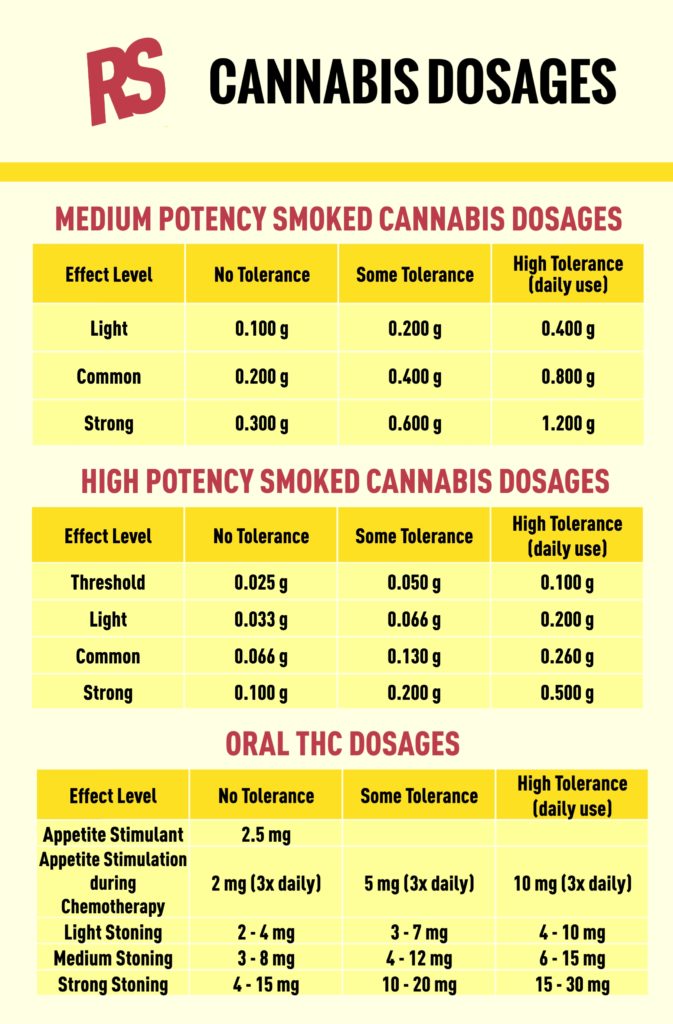
History
Recent research confirms cannabis use dates back at least 2,500 years ago in Western China. Since smoking pipes weren’t available at this point in time in Western China, they burned cannabis in wooden braziers. This was performed during mortuary ceremonies at the Jirzankal Cemetery. Scientists were able to confirm this use through a phytochemical analysis of the remains of charred wood.
Indigenous Uses
Cannabis has seen frequent and well-documented use for religious and ceremonial purposes. For instance, Hindus in Nepal will consume cannabis to aid with meditation and during religious festivals. Some Sadhus, a Hindu holy person, believe Lord Shiva encouraged the use of cannabis. A recent survey in Nepal during a Shiva festival revealed that most Sadhus are daily users of cannabis, and a third promoted the use of cannabis for Hindus.
Hinduism has a strong belief system that aids in positive and healthy cannabis use. One aspect of this belief system is only using low-potency preparations of the substance. The primary form of consumption is weed drinks, either bhang or thandai. They strongly discourage using charas, a form of extracted cannabis.
This all stems from the belief that consuming too much cannabis can decrease an individual’s motivation, but consuming in small amounts will actually increase their overall motivation. There is an understanding within Hindu communities that cannabis has a complex effect on a person’s overall happiness and satisfaction.
Arab physicians believed in and studied the healing properties of cannabis to help their communities overcome illness. This resulted in Arabic communities using cannabis as a diuretic, anti-epileptic, anti-inflammatory, painkilling, and antipyretic. Some communities still use it to this day because of the beliefs these physicians held.
Modern Day Research
CBN IDENTIFIED
The psychoactive effects of Cannabis were not scientifically realized until the late 1800s. Thomas Barlow Wood, a professor at the University of Cambridge, was the first person to identify cannabinol (source?), or CBN. CBN is the metabolite of THC which is what causes the psychoactive effects of Cannabis. He published his findings in 1899 in the Journal of the Chemical Society.
CBD DISCOVERED
In 1940 cannabidiol, or CBD, was discovered within the cannabis plant. The early description of CBD referred to it as a toxic substance without any explanation. This article was then used to push legislation to further criminalize cannabis. Eventually, the Comprehensive Drug Abuse Prevention and Control Act of 1970 passed, making CBD an illegal substance within the United States. Despite having no basis for calling CBD a toxic substance, it wasn’t legalized until the 2018 Farm Bill passed, making CBD derived from hemp legal to sell, purchase, and consume within the United States.
THC DISCOVERED
THC was first discovered in 1964 by Raphael Mechoulam and Yechiel Gaoni. They published their findings in the Journal of the American Chemical Society. This is when scientists first began to really understand the psychoactive effects of cannabis. (ENTER)
CB1 RECEPTOR DISCOVERED
The first endogenous cannabinoid receptor was discovered in 1988. This receptor is predominantly located throughout the central nervous system and peripheral nervous system. Discovering these natural receptors gave us further insights into not only how cannabis works, but also how our bodies work.
ANANDAMIDE DISCOVERED
In order for an exogenous molecule (outside the body) to affect a receptor inside the body, the body must produce an endogenous molecule (inside the body) that also activates the same receptor. The first endogenous cannabinoid (endocannabinoid) was discovered in 1992.
CB2 RECEPTOR DISCOVERED
The second endogenous cannabinoid receptor was discovered in 1993. It is predominantly located in the peripheral nervous system and can also be found in the central nervous system. Thanks to these discoveries of CB1 & CB2 receptors, we now know that these receptors play a large role in our overall health. Any substance that acts on these receptors could have important therapeutic properties.
2-ARACHIDONOYLGLYERCOL DISCOVERED
1995 The second endocannabinoid was discovered…
Notable Events, Findings, Studies
French physician Jacques-Joseph Moreau and Irish physician William Brooke O’Shaughnessy were the first to study the potential medicinal benefits of cannabis in the early 1800s. Jacques-Joseph Moreau theorized that hashish could be used to help treat mental illness. He believed it could help with replicating mental illness to help patients overcome their underlying mental illnesses.
William Brooke O’Shaughnessy introduced the medicinal benefits of cannabis to the Western world. During his time in India, he observed how the native people of India used cannabis to treat various illnesses. He then successfully used cannabis to relieve pain caused by rheumatism and stop the convulsions of an infant. This is how he showed England the medical benefits of cannabis.
During this time, cannabis was a completely legal substance in the United States. It wasn’t even taxed until the Marihuana Tax Act of 1937 passed. This tax was passed once the Federal Bureau of Narcotics noticed it becoming an increasingly popular substance. The government realized they were missing out on a large stream of revenue by not regulating it.
It wasn’t until 1970 that cannabis became an illegal substance under President Richard Nixon. He campaigned on “villainizing” any and all drug use aside from Alcohol. In the 1990s, during an interview with one of Nixon’s top advisors, John Ehrlichman, the true reasoning behind villainizing all drug use was revealed.
John Ehrlichman stated, “by getting the public to associate the hippies with marijuana and blacks with heroin. And then criminalizing both heavily, we could disrupt those communities… We could arrest their leaders. Raid their homes, break up their meetings, and vilify them night after night on the evening news. Did we know we were lying about the drugs? Of course, we did.” This legislation is still in effect today.
Recent Studies
There has been some progress made in legalizing CBD in the United States. In 2018, the World Health Organization declared there are no public health risks or abuse potentials found in cannabidiol. This led to the United States passing the 2018 Farm Bill in early 2019. This bill legalizes the purchase, sale, and possession of CBD derived from a hemp plant.
In 1997, the American Journal of Respiratory and Critical Care Medicine released a study of 394 individuals to determine the effect smoking Cannabis has on lung function. They determined there was no effect on lung function based on whether or not an individual smokes cannabis. Further, they determined no correlation between lung function and the frequency at which someone smoked cannabis. There was however a decline in lung function among tobacco smokers.
Laws and Legal Status
In the past few decades, cannabis has seen a recent resurgence in usage due to the legalization efforts in the United States and the rest of the world. It is such a popular substance due to its generally low-risk, high-reward effects. Several states have legalized weed to some extent.
Currently, recreational use is legal for adults over 21 years of age in 16 states, and 38 states have legalized cannabis for medical use. These legalization efforts have skyrocketed the use of this substance.
The Comprehensive Drug Abuse Prevention and Control Act of 1970 made cannabis a federally illegal substance within the United States. Since then, many states have legalized recreational and medicinal use of the substance. Currently, as of 2020, 16 states have legalized the recreational use of cannabis, and 38 states have legalized the medicinal use of cannabis. The legalization of medicinal cannabis started in 1996. However, during this time, the federal government could still interfere in cannabis use within these legalized states. In 2014, the Rohrabacher-Farr amendment passed, prohibiting the federal government from interfering with state-implemented medical cannabis laws.
Canada passed the Cannabis Act in 2018, which legalized recreational cannabis use. Canadians regulate the sale, purchase, and possession of cannabis through dispensaries across the country.
Australia made cannabis legal to grow for medicinal purposes and scientific studies in 2015. Adult use is illegal in most provinces, with the ]exception of the Australian Capital Territory (ACT), which includes the capital, Canberra. The ACT legalized recreational marijuana on September 25, 2019. In the territory, residents over age 18 may possess up to 50 grams of marijuana and grow their own cannabis.
Most of the world’s policies on cannabis use stem from the United Nations’ Single Convention on Narcotic Drugs of 1961, Convention on Psychotropic Substances of 1971, and the United Nations Convention Against Illicit Traffic in Narcotic Drugs and Psychotropic Substances of 1988. Uruguay and Canada are the only Sovereign states to have fully legalized the purchase, sale, and use of cannabis throughout their nation.
Georgia and South Africa have legalized the use of cannabis, but it is still illegal to sell and purchase the substance. Spain and the Netherlands passed policies of limited enforcement. Meaning, it is still illegal, but the law is not enforced by their governments.
Pharmacology
Although we know the overall pharmacology of cannabis is still relatively unknown due to the strict government regulations scientists must navigate in order to study the substance. The phytocompounds and phytonutrients contained within cannabis, individually and/or collectively, cause the psychoactive and therapeutic effects of the plant. The primary psychoactive substance is THC which is metabolized into CBN once ingested. CBN then binds to the cannabinoid receptors within the brain.
Toxicity
First: What makes a substance toxic? Toxicity is defined based on the different levels of exposure required for a substance to cause harm to a human or animal. The level of toxicity measures the dose required to cause harm to a human, as even water can be toxic in too high of a dose, and lethal snake venom can be non-toxic in a small enough dose. A common measurement of toxicity is the LD50 which measures the lethal dose for half of the tested organisms.
According to the Australian Department of Health, the LD50 is approximately 130mg/KG of THC. This means for an average human the lethal dose of THC would be 8.45KG, or nearly 19 pounds, of THC. If someone had cannabis that contained 25% THC, it would take approximately 75 pounds of smoked cannabis before reaching a lethal level of THC in the body.
There were reports of cannabis having a high potential for abuse similar to that of cocaine and heroin. A meeting of over 25,000 neuroscientists debunked these findings.
Interactions
According to WebMD the largest concern for interactions between cannabis and other substances is with sedatives and theophylline.
Cannabis has the potential to cause drowsiness, so it is not advised to combine consumption with a prescribed sedative as it could potentially cause excessive drowsiness. It is especially important to heed this recommendation if you drive, operate heavy machinery, or have responsibilities that require alertness.
Cannabis can decrease the effectiveness of theophylline (used in therapy for respiratory diseases). There isn’t currently enough information to know if this is a big concern.
The table below shows other potential drug interactions with Cannabis:
Safety
Many consider cannabis to be one of the safest drugs available in the world. According to the Huffington Post, a documented death caused by cannabis overdose has yet to occur. The CDC reports roughly 88,000 deaths caused by alcohol in the United States each year. They also report tobacco causes roughly 480,000 deaths each year in the United States alone. Compared with alcohol or tobacco, it becomes clear why many consider cannabis to be safer than many legal drugs.
Effects
Physiological
The endocannabinoid system (endogenous cannabinoid system) is a ubiquitous lipid signalling system which is said to have appeared early in evolution, and has important regulatory functions throughout the body in all vertebrates.
The Journal of Clinical Investigations established a link between CBD use and decreased blood pressure. In a trial of nine healthy males, resting blood pressure decreased by about 6mmHg and stroke volume by about 8ml. During this trial, they also looked at the effect CBD had on blood pressure during exercise and cold stress. They determined it lowered blood pressure, increased heart rate, and reduced stroke volume during exercise, with similar results during cold stress. These results could lead to further studies to find whether or not CBD could be used as a treatment for various cardiovascular illnesses.
Psychological
When an individual consumes cannabis, their default mode network, or DMN, slightly deactivates. The DMN “normalizes” your everyday activities and sensations. So, when a person’s DMN partially deactivates, that individual will tend to further question their everyday activities. This effect is common among many other psychedelics as well.
The Journal of Clinical Investigation has linked cannabis with having antidepressant-like effects. A lack of neurons in the hippocampal dentate gyrus potentially causes some types of depression. A trial with rats determined that certain cannabinoids have a neurogenesis effect in the hippocampal dentate gyrus.
Some people’s bodies have a shortage of naturally produced endocannabinoids (known as: clinical endocannabinoid deficiency) and genuinely benefit from ingesting cannabinoids. Several studies have led to the hypothesis that endocannabinoid deficiency contributes to depressive symptoms.
In an attempt to understand the mechanisms behind a correlation found between people with anxiety disorders and those who use cannabis, the National Center for Biotechnology Information conducted a systematic review of these cases. They were not able to determine the cause of this correlation or whether cannabis use could cause long-term anxiety disorders. Further research is required to understand whether or not it could be causing some anxiety disorders or whether people with anxiety disorders have a tendency to use Cannabis.
THC modifies the neural communication in our amygdala, for better or worse; some people claim to have anxiety relief from consuming cannabis, while some experience side effects such as anxiety and paranoia. It is believed that THC can cause anxiety and paranoia by over-exciting the neural pathways in our amygdala in instances of high doses, in modulation with certain terpenes (certain strains), or (potentially) habitual use.
Common Side Effects
Common side effects of Cannabis use include:
- Altered sensations
- Drowsiness
- Reduced coordination
- Euphoria
- Anxiety/Paranoia
- Decreased blood pressure
- Dry mouth, commonly referred to as cotton mouth
- Appetite stimulation
- Dry eyes
Some users experience vomiting and nausea after their first time consuming or after heavy use, but it is not very common. When mixed with other drugs, such as alcohol, the likelihood of vomiting and nausea increases.
Adverse Effects
Cannabis has a small potential for causing a psychological addiction. Studies suggest that somewhere between 5% to 10% of users become daily, habitual smokers at some point in their life. In extreme cases, some users have experienced mild withdrawals that usually subside within a week.
There have been links between cannabis use and later diagnosis of psychotic disorders. It is still unclear whether it caused the psychotic disorder or whether the individual would have developed the disorder regardless.
Some chronic users of cannabis experience Cannabis Hyperemesis Syndrome. Symptoms include recurrent nausea, vomiting, and abdominal pain. The root cause of this syndrome is still unknown and is diagnosed based on the symptoms associated with cannabis use. Users who experience this syndrome report a hot shower or bath provides temporary relief of the symptoms. To fully relieve these symptoms, one must stop all use of cannabis. Some patients with CHS report being so sensitive they can no longer even be present to second-hand cannabis smoke.
A tolerance to cannabis can build up after repeated use of the substance within a short period of time. The “high” effect one feels is attributed to an abnormal increase in the activity of CB1 receptors. The activity of these receptors usually returns to normal after THC is gone, but many people choose to repeatedly expose their bodies to THC consumption consistently over multiple days, weeks, and months. In this case, the brain fights back to normalize the CB1 activation patterns – where mechanisms work to dampen the impact of THC.
This means that after repeated use, larger doses will be required to feel the effects. A common practice within the cannabis community is for heavy users to take a “tolerance break.” This is a break from using it that can last up to a month to reset a user’s tolerance. A tolerance to cannabis will begin to secede after two days of abstinence and will completely reset after approximately four weeks.
Uses
Since cannabis has become a legal substance for medicinal use in over half of the United States and many parts of the world, research has increased into its potential medicinal uses. Cannabis (hemp) byproducts are also used in cosmetics and clothing, as well as for a variety of industrial applications.
Therapeutically
Medical cannabis is used to treat a wide variety of ailments, including chronic pain, PTSD, HIV, ALS, Asthma, Alzheimer’s Disease, chronic Cystitis, Epilepsy, Dystonic Movement Disorders, Fibromyalgia, and MS. It has shown promising results for all of these disorders when studied under strict scientific requirements. As legalization continues, it will slowly become easier for scientists to study it for its medicinal and therapeutic properties. Further studies are required to understand its full medicinal benefits.
Cosmetic and Clothing
A growing trend in the cosmetic and clothing industry is hemp-based products. Rightfully so, because hemp is adds immense value to many industries while being an easily renewable resource.
CBD has shown some properties that have helped some people clear up their skin from acne. This has resulted in CBD becoming hugely popular in skincare and beauty products.
Insert this research from PubMed instead.
CBD infusions have become a trend for the following products: Lotion
- Balms
- Skin Oil
- Soap
- Bath bombs
- Shampoo
- Perfume
- Mascara (moved)
- Body butter
Some cosmetic products contain hemp seed oil, which is a nutrient-rich byproduct of hemp seeds – which contains no CBD or THC.
There has also been a growing trend of hemp-based clothing lines. Hemp is very suitable for clothing of all kinds. It is UV and mold-resistant, cost-effective, environmentally friendly, and has three times the tensile strength of cotton. Hemp can even be spun in conjunction with cotton or silk to create clothing that has the comfort of cotton and silk with the durability of hemp.
Industrial Uses of Cannabis
Current industrial uses for hemp include making paper, textiles, biodegradable plastic, fuel, and even a form of concrete. The use of hemp for industrial purposes comes from its cost-effective and environmentally friendly growth. It is one of the fastest-growing biomasses on earth, requiring very little to no pesticides and zero herbicides. The roots of the plant grow deep, preventing erosion. This makes hemp both easy and inexpensive to mass produce.
Hempcrete is made with a mixture of hemp hurds and lime. What makes hempcrete really stand out from traditional concrete is its lack of brittleness. This means expansion joints are not required when using hempcrete. This, in turn, reduces the cost and labor required in construction. It also acts as an insulator and moisture regulator making it an ideal product in a wide range of climates.

Cannabis Today
Today, Cannabis use is higher than ever due to legalization efforts and prevalence in pop culture. The Cannabis community widely regards it as a low-risk, high-reward substance due to its mild adverse side effects. These legalization efforts have also opened up Cannabis for further studies on its potential medicinal and therapeutic uses.
Current Studies & Research
The Multidisciplinary Association for Psychedelic Studies, or MAPS, has recently released a notice that they are working on a study to show the medical uses of cannabis in treating Post-Traumatic Stress Disorder. They are attempting to satisfy the requirements of the U.S. Food and Drug Administration. The results of this study are expected to be released by the end of 2019.
Berkeley is currently making heavy investments in studying cannabis for a variety of reasons. These studies include topics such as policy development and land use, environmental issues, and how the legalization of cannabis will affect people and culture.
UCLA has released a range of articles on cannabis use as well. One of these studies explores how recreational cannabis use affects a person’s quality of life. They have also conducted a study on using cannabinoids as a palliative medicine. Another study was conducted to determine whether or not cannabis use at a young age is associated with anhedonia, a disorder that inhibits a person from experiencing pleasure.
Cambridge University conducted an in-depth study on CBD as a treatment for psychiatric disorders. Through extensive research, they were able to determine that CBD has potential as an antipsychotic. It may work to reduce the symptoms of schizophrenia, general social anxiety disorders, various withdrawal symptoms, and other psychiatric disorders.
Effects of Legalization
The International Journal of Drug Policy made an interesting statistical correlation between the way cannabis is legally classified in the UK and the number of people admitted for cannabis psychosis. This study shows that harsher penalties for cannabis use and possession resulted in a larger number of people being admitted for cannabis psychosis. The reason for this correlation is still unknown. Scientists believe a potential cause could be increased anxiety and paranoia when using cannabis in an area with harsh penalties if caught.
A big concern in legalizing cannabis is the potential for increased teen use. JAMA Networks released a study on the association between teen cannabis use and legalization with mixed results. They were able to determine that there was no correlation between increased adolescent cannabis use and the legalization of cannabis for medicinal use. Additionally, some states that legalized cannabis recreationally saw increased adolescent cannabis use, others saw a decrease in adolescent cannabis use, and some saw no change at all.
FAQ
How to store Cannabis?
It is best to store cannabis in an airtight container placed in a dry, cool, dark place, as oxygen, heat, and UV light will degrade cannabinoids. The optimal humidity for cannabis preservation is at a relative humidity of 59-63%.
Can Cannabis degrade?
Cannabis can go bad if stored improperly for an extended period of time. The primary concern would be mold or mildew growth. If stored in a cold, dark place with low humidity, there is a very small chance of mold or mildew growth. Oxygen, heat, and UV light will degrade cannabinoids, but they do not become toxic after degradation.
Can you overdose on Cannabis?
There has yet to be a confirmed case of cannabis-caused overdose.
Contributor | RS
This Cannabis guide is for educational purposes only. While it is our belief that choosing to consume psychedelics is an inalienable human right, many psychedelic substances are currently illegal in the United States.
Our substance guides provide the public with the most accurate and reliable information about psychedelic substances that currently exist. We have compiled research, scientific studies, as well as experiences and thoughts from the psychedelic community. We do not include all the scientific research and studies. Rather, we curate each of our guides to reflect the most relevant insight backed by the most credible evidence. That being said, we are just at the beginning of studying these substances, and every day, we are learning something new. Knowledge is power! Have a bite. –RS
